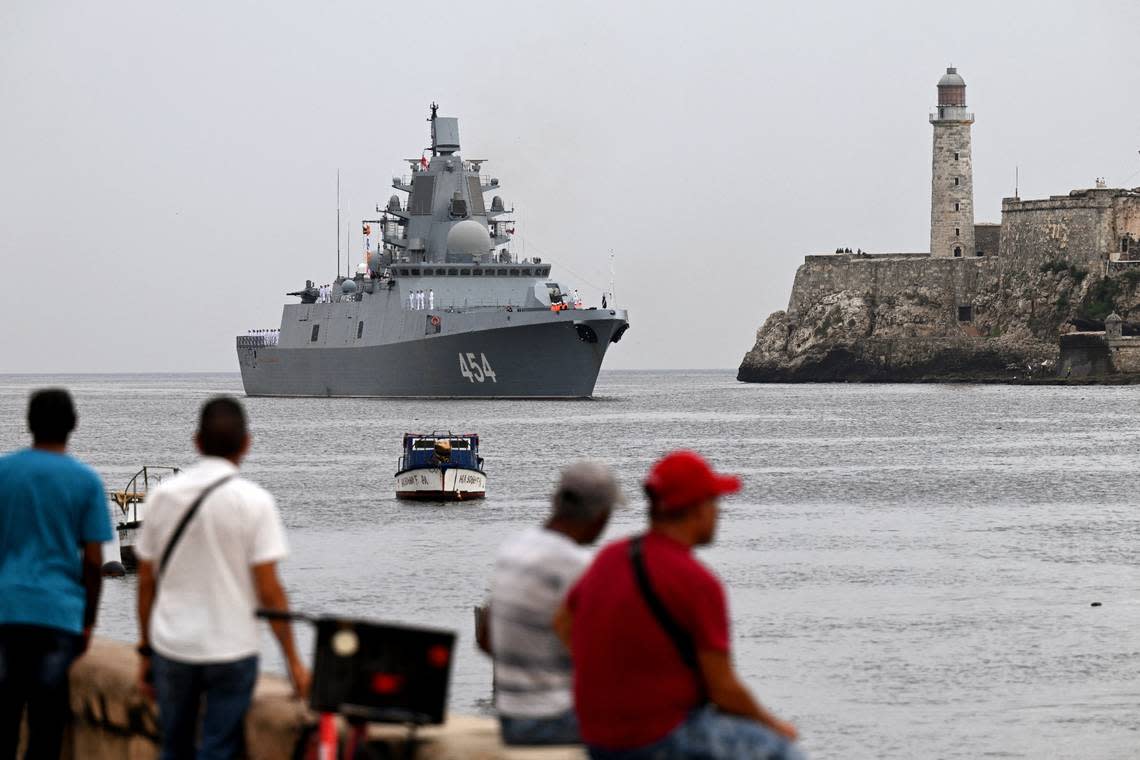Russian warships came close by. How some Floridians were monitoring them in real time

When a flotilla of Russian warships passed close to South Florida’s shores Tuesday on their way to Havana, some Floridians were keeping close track, using services that allow the tracking of ships globally.
Maps taken from services such Marinetraffick and Fleetmon, among others, began circulating through social media soon after the Russian ships were spotted traveling about 30 miles off Key Largo. The ships, which included one missile frigate and two support vessels, could be tracked almost on real time thanks to signals sent by their transponders, which these companies track as part of their services. The transponders are part of a global safety network called the Automatic Identification System
Because they are military ships, Russian vessels could have turned off their transponders had they wanted to run undetected, but an expert said they were likely kept on to inform commercial ships and civilian vessels in the area of their presence as an added safety measure to avoid the risk of accidental collisions.
The position of the flotilla so close to the southern U.S. coast on Tuesday was mesmerizing for many people on social media, although the information circulating was at times overblown or inaccurate.
“The Russian dis/mis-info channels are running amok with the ‘Russians are in Cuba’ nonsense. Absolute nonsense,” commented X user@NatalkaKyiv in one of the many threads still running on Wednesday. “Yep. They are presenting this as if the second Cuban missile crisis is a-brewin”.
Luis Dominguez, a Cuban exile who lives in Miami and was monitoring the Russian ships and a submarine as they headed towards Havana, said that some of the people were nervously tracking the vessels under the misconception that the nuclear-powered sub Kazan had nuclear weapons aboard.
The threat that the ships represent to the U.S. are overblown, said Dominguez, who has a website dedicated to following the movements of Cuban officials, and at times blogs about their air travel. “Any of the U.S. destroyers assigned by the Navy to track the frigate is much more powerful, and being a nuclear submarine just means that it uses nuclear power to move”, he said.
Just as the maps were circulating on Tuesday and Wednesday, social media was inundated by videos of the Kazan surfacing in Havana Harbor.
Regardless of where the Russian ships go next, it is highly likely that their travels will continue to be monitored through the ship tracking services.
“We’ll continue watching,” Dominguez said.

